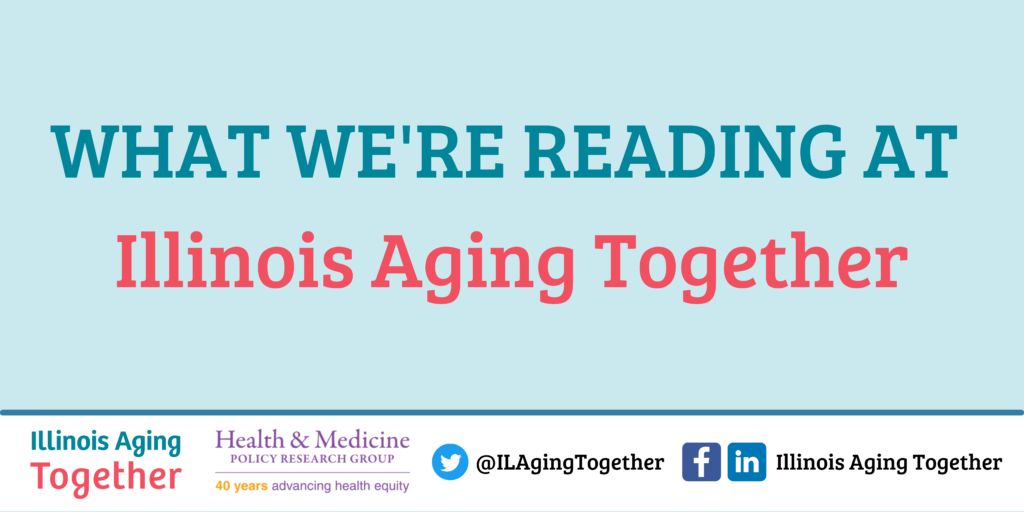
What We’re Reading at the Center for Long-Term Care Reform and Illinois Aging Together
Health & Medicine Policy Research Group’s Center for Long-term Care Reform and Illinois Aging Together campaign are dedicated to advancing policies and structures that improve the conditions in which Illinoisans live, work, play, and age across the life course. Through our work, it is crucial for us to stay abreast of current events, developments, and stories in the aging and health sectors–and beyond.

Below are some of the recent articles and other resources that we’ve found recently that are pertinent to our work:
Telling age-inclusive stories (Shuttershock and American Council on Aging)
“The longer we live, the more different from one another we become. Yet we most often see images of older white people, and they commonly portray frailty, dependence, and isolation: a woman looking forlornly out a window, or disembodied hands clutching a cane. While these experiences are part of capturing age diversity, it’s time to expand how advanced age is represented—and to dismantle ageism in the process—by creating and using images that more widely depict the experience of growing older.”
America’s homeless ranks graying as more retire on streets (Associated Press, WGN9)
“We’re seeing a huge boom in senior homelessness,” said Kendra Hendry, a caseworker at Arizona’s largest shelter, where older people make up about 30% of those staying there. “These are not necessarily people who have mental illness or substance abuse problems. They are people being pushed into the streets by rising rents.”
A Rising Tally of Lonely Deaths (Thomas Fuller, The New York Times)
An epidemic of deaths on the streets of American cities has accelerated as the homeless population has aged and the cumulative toll of living and sleeping outdoors has shortened lives. The wider availability of fentanyl, a particularly fast-acting and dangerous drug, has been a major cause of the rising death toll, but many homeless people are dying young of treatable chronic illnesses like heart disease.
As Families Grieve, Grandparents Step Up (Paula Span, The New York Times)
In December, a coalition called the Covid Collaborative estimated that about 167,000 American children like Kimiya had lost a parent or primary caregiver to the pandemic, with much higher rates among communities of color. More recently, researchers at Imperial College London put the number of children who have lost one or both parents at nearly 200,000.
Grandparents have always been the first line of defense in the wake of such tragedies. The nonprofit Generations United reports that prepandemic, 2.6 million American children already lived in “grandfamilies,” raised by relatives for reasons ranging from military deployment and incarceration to deaths from substance abuse, other illnesses or accidents. Many more grandparents provide other kinds of support — child care, transportation, financial help — when a parent dies.
New Laws Let Visitors See Loved Ones in Health Care Facilities, Even in an Outbreak (Stephanie Colombini, KHN)
Hospitals and long-term care facilities set pandemic restrictions on visitors to protect patients and staffers from infection. But supporters of these new laws said they want to ease the restrictions because the rules may have harmed patients.
An Associated Press investigation found that for every two residents in long-term care who died from covid-19, another resident died prematurely of other causes. The report, published in late 2020, attributed some of those deaths to neglect. Other deaths, listed on death certificates as “failure to thrive,” were tied to despair.
Ageism: Another Form of Bigotry (R. Butler)
“…we may soon have to consider very seriously a form of bigotry we now tend to overlook: age discrimination or age-ism, prejudice by one age group toward other age groups. If such bias exists, might it not be especially evident in America; a society that has traditionally valued pragmatism, action, power, and the vigor of youth over contemplation, reflection, experience, and the wisdom of age?”

